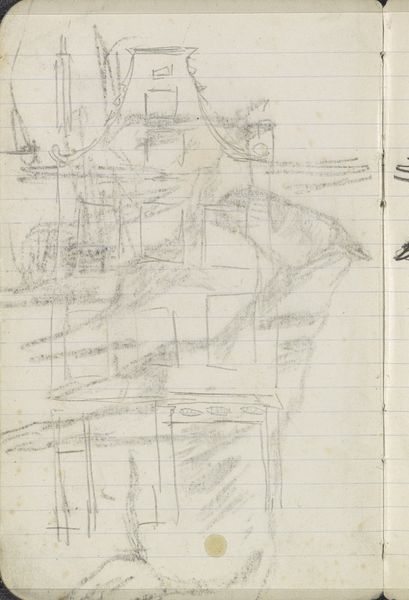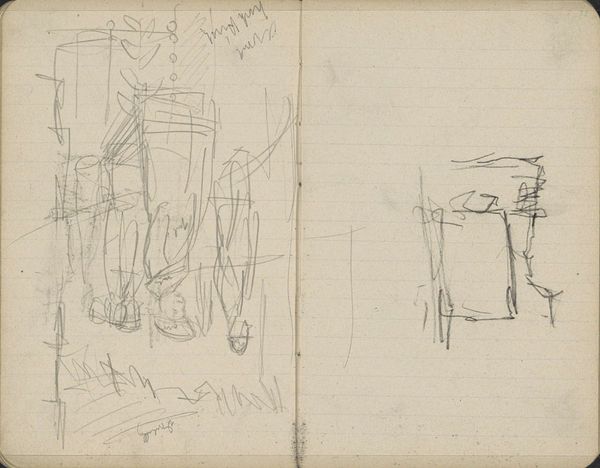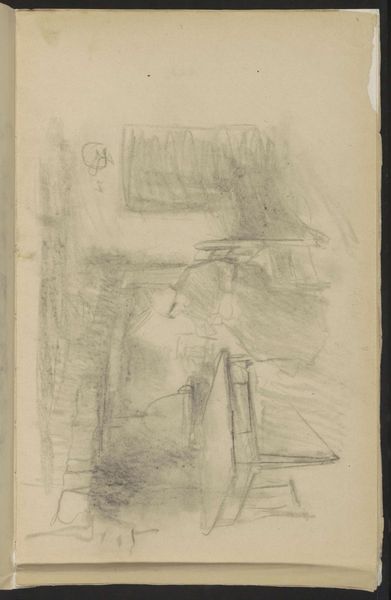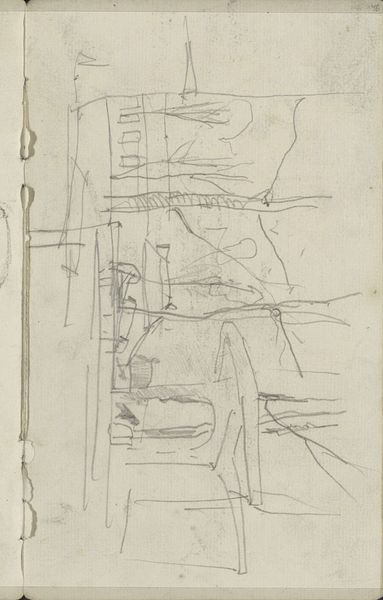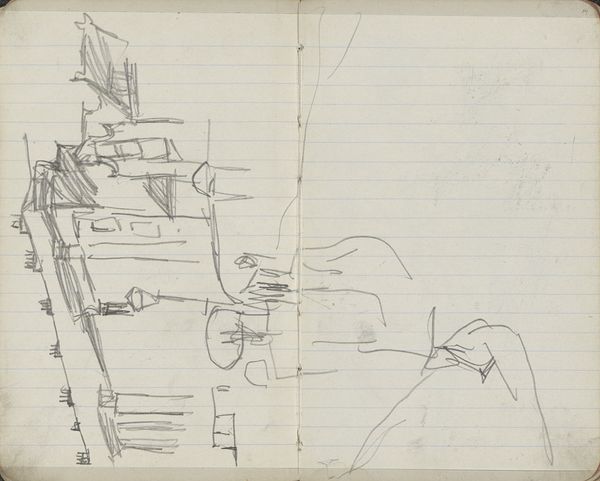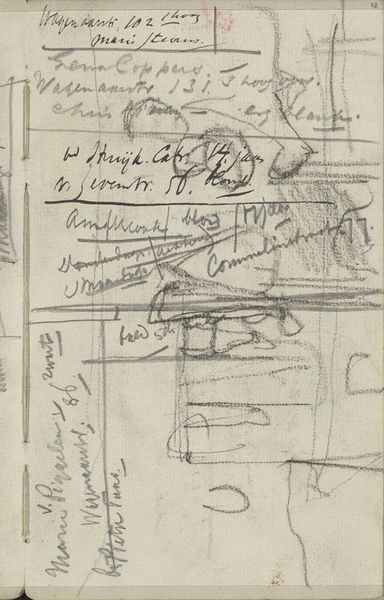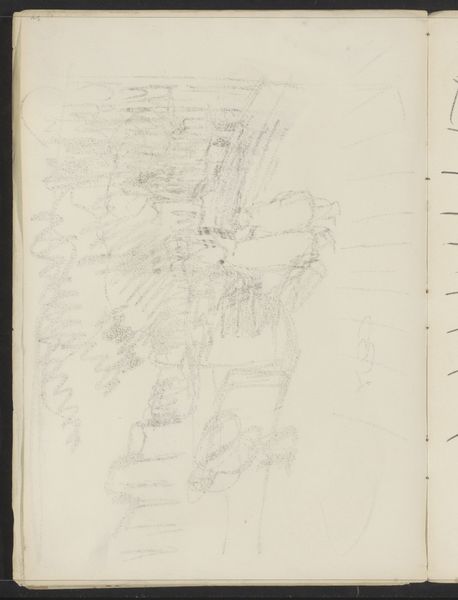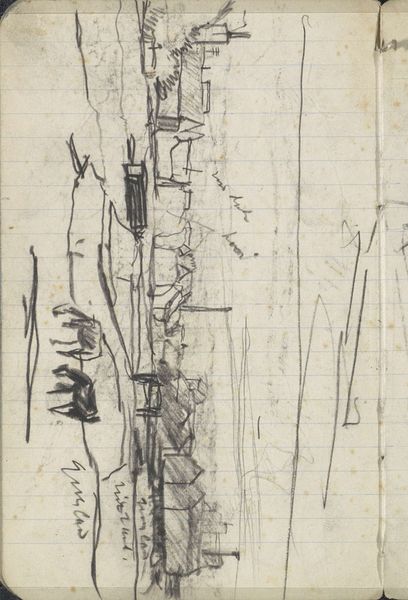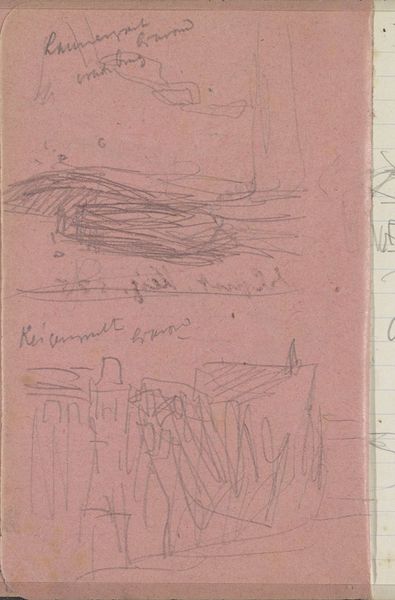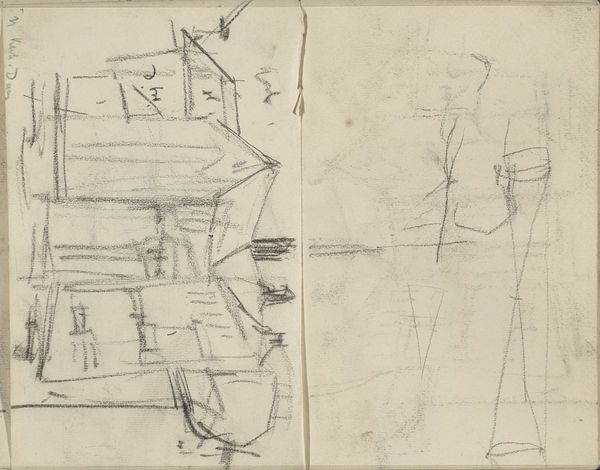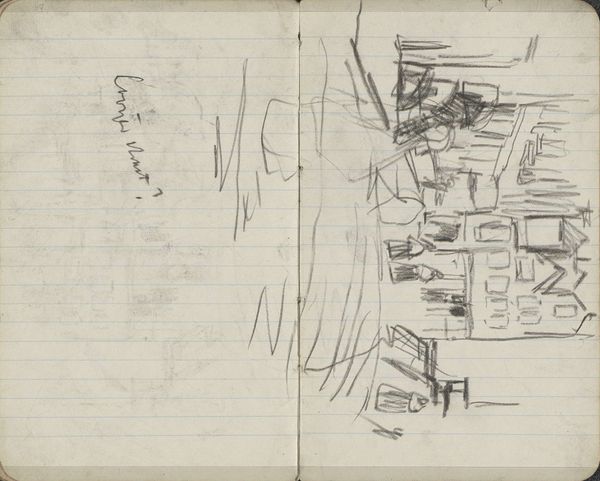
Copyright: Rijks Museum: Open Domain
Editor: Here we have George Hendrik Breitner’s “Man bij twee paarden,” or “Man with Two Horses,” made with pencil around 1896-1901. It's currently housed in the Rijksmuseum. I’m immediately struck by the casual, almost hurried nature of the lines. It feels very much like a snapshot from a personal sketchbook. What jumps out at you when you look at it? Curator: The sketchbook context is crucial. These rapid sketches, though seemingly informal, tell us a lot about Breitner's artistic process and his engagement with the urban environment. In the late 19th century, there was an increased fascination with capturing fleeting moments of modern life. Breitner, along with other Impressionists, aimed to represent contemporary society without idealizing it. How does this sketch fit into that goal? Editor: I guess, it's about everyday life, right? It's not posed or grand; it's just a quick observation of a man with horses in what could be a street scene. Is that everyday quality part of its social commentary? Curator: Absolutely. Breitner documented Amsterdam with unflinching realism. Unlike academic painters who focused on historical or mythological subjects, he chose the mundane – street workers, working-class neighborhoods, and, as we see here, horses and figures amidst the hustle. This focus on the everyday had political implications; it brought visibility to the lives of ordinary people. Do you notice how the sketch’s composition reinforces this idea? Editor: Well, the perspective seems almost off-the-cuff, as if he just quickly glanced at the scene and drew what he saw. Nothing is centered or overly emphasized. It’s a candid, unassuming moment. Curator: Precisely! The asymmetry and the rough quality contribute to a sense of immediacy. It’s less about aesthetic perfection and more about capturing a real-life impression. He isn't romanticizing anything; he's just recording. What else do you make of this image? Editor: Considering the date, seeing this makes me wonder about how artists were beginning to record life. It definitely gives the impression of a quickly captured, passing moment in time. It feels different from other art I've studied from the period. Curator: It reflects the shift in art's function and purpose that was taking place, moving away from the academic establishment and toward more personal and immediate forms of expression. And that's really interesting to consider when approaching artworks from that period.
Comments
No comments
Be the first to comment and join the conversation on the ultimate creative platform.
